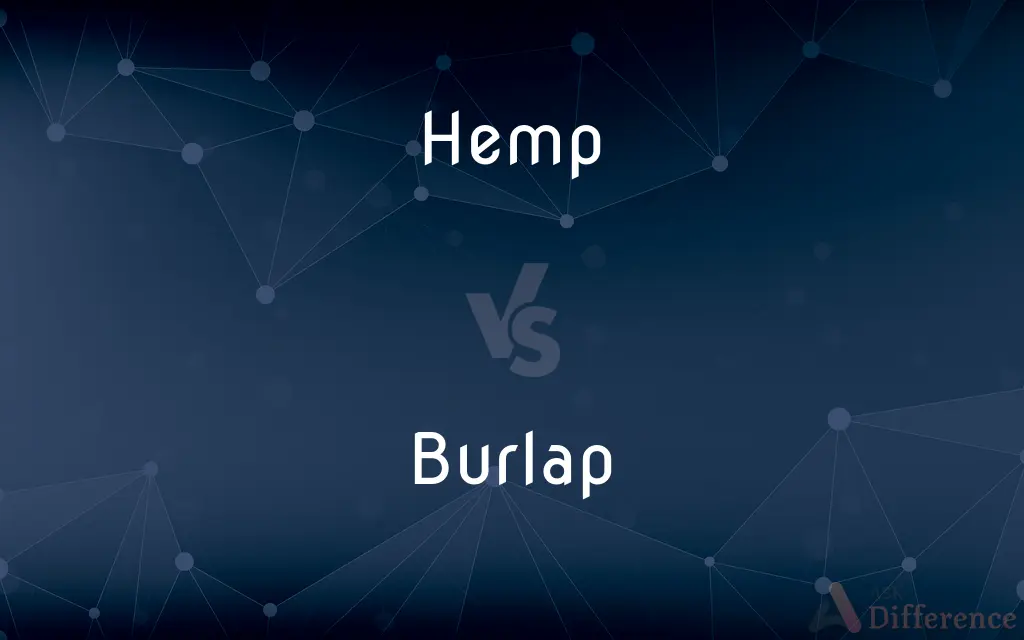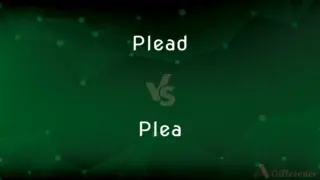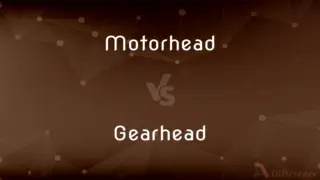Hemp vs. Burlap — What's the Difference?
By Tayyaba Rehman & Fiza Rafique — Updated on April 5, 2024
Hemp is a versatile fiber from the Cannabis sativa plant, used in textiles to nutrition, while burlap, made from jute or hemp, is a coarse fabric known for its durability.

Difference Between Hemp and Burlap
Table of Contents
ADVERTISEMENT
Key Differences
Hemp refers to fibers obtained from the Cannabis sativa plant, cultivated for its strong, durable fibers, seeds, and oil. It's utilized in a wide array of products, from clothing and biofuels to paper and food supplements. Burlap, on the other hand, is a specific type of fabric made primarily from the fibers of the jute plant, though it can also be made from hemp. It is characterized by its coarse texture and strong, durable nature, which makes it ideal for use in sacks, bags, and other materials that require robustness.
While hemp serves as a source material for various textiles, including fabrics softer than burlap, burlap itself is known for its specific application in the packaging industry, agriculture (for sacks and bags), and at times in décor. This distinction underscores hemp's versatility as a raw material and burlap's specialized use in industries that require sturdy and durable fabric.
Hemp's environmental benefits are significant, contributing to soil health, requiring less water than cotton, and needing no pesticides for cultivation. These attributes make hemp a favored choice for eco-conscious consumers and industries. In contrast, while burlap is also considered environmentally friendly due to its biodegradability and durability, its cultivation (especially jute) can be more resource-intensive compared to hemp.
Despite their differences, hemp and burlap share a connection through the use of hemp fibers in producing burlap fabric. This link underlines the versatility of hemp and the specialized nature of burlap within the textile industry. Both play unique roles in sustainable practices and the global economy, with hemp offering a broader spectrum of uses beyond what burlap is commonly known for.
Comparison Chart
Source
Cannabis sativa plant.
Jute plant or hemp fibers.
ADVERTISEMENT
Texture
Varies; can be soft or coarse.
Coarse and rough.
Uses
Textiles, biofuels, paper, supplements.
Sacks, bags, agricultural uses.
Environmental Impact
Less water, no pesticides needed.
Biodegradable, but more resource-intensive.
Durability
Strong and durable.
Strong, ideal for heavy-duty use.
Compare with Definitions
Hemp
A fiber from the Cannabis sativa plant, used in a wide range of products.
Hemp is increasingly used in the fashion industry for its durability.
Burlap
A coarse fabric made from jute or hemp, used for sacks and bags.
Burlap sacks are commonly used for transporting grains.
Hemp
Known for its strong fibers used in textiles, paper, and health food.
Hemp seeds are a nutritious addition to any diet.
Burlap
Characterized by its coarse and rough texture.
Burlap is often used in rustic home décor for its textured appearance.
Hemp
Grows easily with minimal water and no pesticides.
Hemp cultivation is considered a sustainable agricultural practice.
Burlap
Ideal for packaging, agriculture, and other heavy-duty applications.
Coffee beans are frequently shipped in burlap bags.
Hemp
Hemp can be manufactured into soft fabrics for clothing.
Softened hemp fabric is becoming popular in eco-friendly clothing lines.
Burlap
Known for being environmentally friendly due to its biodegradability.
Burlap is preferred for earth-friendly gardening practices.
Hemp
Hemp fibers are strong, durable, and resistant to rot and mildew.
Hemp rope is prized for its strength and longevity.
Burlap
Highly durable and suitable for strenuous use.
Burlap is used for sandbags due to its toughness.
Hemp
Hemp, or industrial hemp, is a variety of the Cannabis sativa plant species that is grown specifically for industrial use. It can be used to make a wide range of products.
Burlap
Coarse canvas woven from jute, hemp, or a similar fibre, used especially for sacking
A burlap sack
Hemp
The cannabis plant, especially when grown for fibre.
Burlap
A strong, coarsely woven cloth made of fibers of jute, flax, or hemp and used to make bags, to reinforce linoleum, and in interior decoration.
Hemp
Cannabis.
Burlap
(US) A very strong, coarse cloth, made from jute, flax, or hemp, and used to make sacks, etc.
Hemp
The tough, coarse fiber of the cannabis plant, used to make cordage, yarn, and fabric.
Burlap
(transitive) To wrap or cover in burlap.
Hemp
Any of various plants similar to cannabis, especially one yielding a similar fiber.
Burlap
A coarse fabric, made of jute or hemp, used for bagging; also, a finer variety of similar material, used for curtains, etc.
Hemp
The fiber of such a plant.
Burlap
Coarse jute fabric
Hemp
A tall annual herb, Cannabis sativa, native to Asia.
Hemp
Various products of this plant, including fibres and the drug cannabis.
Hemp
The gallows.
Hemp
A plant of the genus Cannabis (Cannabis sativa), the fibrous skin or bark of which is used for making cloth and cordage. The name is also applied to various other plants yielding fiber.
Hemp
The fiber of the skin or rind of the plant, prepared for spinning. The name has also been extended to various fibers resembling the true hemp.
Hemp
A plant fiber
Hemp
Any plant of the genus Cannabis; a coarse bushy annual with palmate leaves and clusters of small green flowers; yields tough fibers and narcotic drugs
Hemp
A rope that is used by a hangman to execute persons who have been condemned to death by hanging
Common Curiosities
Why is hemp considered sustainable?
Hemp requires less water and no pesticides to grow, making it a sustainable crop that contributes to soil health.
Is burlap environmentally friendly?
Burlap is considered environmentally friendly due to its biodegradability, though its cultivation can be resource-intensive.
Are there any dietary uses for burlap?
No, burlap is not used in diets; it's primarily a material for industrial and agricultural applications.
What are some common uses of hemp?
Hemp is used in textiles, biofuels, paper, and as food supplements, showcasing its versatility.
Can burlap be made soft like other fabrics?
Burlap is generally coarse and rough, intended for durable, heavy-duty applications rather than softness.
What makes burlap ideal for agricultural uses?
Its durability and biodegradability make burlap suitable for sacks and bags in agriculture, protecting goods while being eco-friendly.
Can hemp be used to make burlap?
Yes, hemp fibers can be used to produce burlap, offering a durable option for the fabric.
How does the environmental impact of hemp compare to cotton?
Hemp has a lower environmental impact than cotton, requiring less water and no pesticides, contributing to its sustainability.
What is the primary difference between hemp and burlap?
Hemp is a versatile fiber from the Cannabis sativa plant, while burlap is a coarse fabric made from jute or hemp fibers.
Can hemp be used in construction?
Yes, hemp can be used in construction, notably in hempcrete, a sustainable building material.
Share Your Discovery

Previous Comparison
Plead vs. Plea
Next Comparison
Motorhead vs. GearheadAuthor Spotlight
Written by
Tayyaba RehmanTayyaba Rehman is a distinguished writer, currently serving as a primary contributor to askdifference.com. As a researcher in semantics and etymology, Tayyaba's passion for the complexity of languages and their distinctions has found a perfect home on the platform. Tayyaba delves into the intricacies of language, distinguishing between commonly confused words and phrases, thereby providing clarity for readers worldwide.
Co-written by
Fiza RafiqueFiza Rafique is a skilled content writer at AskDifference.com, where she meticulously refines and enhances written pieces. Drawing from her vast editorial expertise, Fiza ensures clarity, accuracy, and precision in every article. Passionate about language, she continually seeks to elevate the quality of content for readers worldwide.
















































